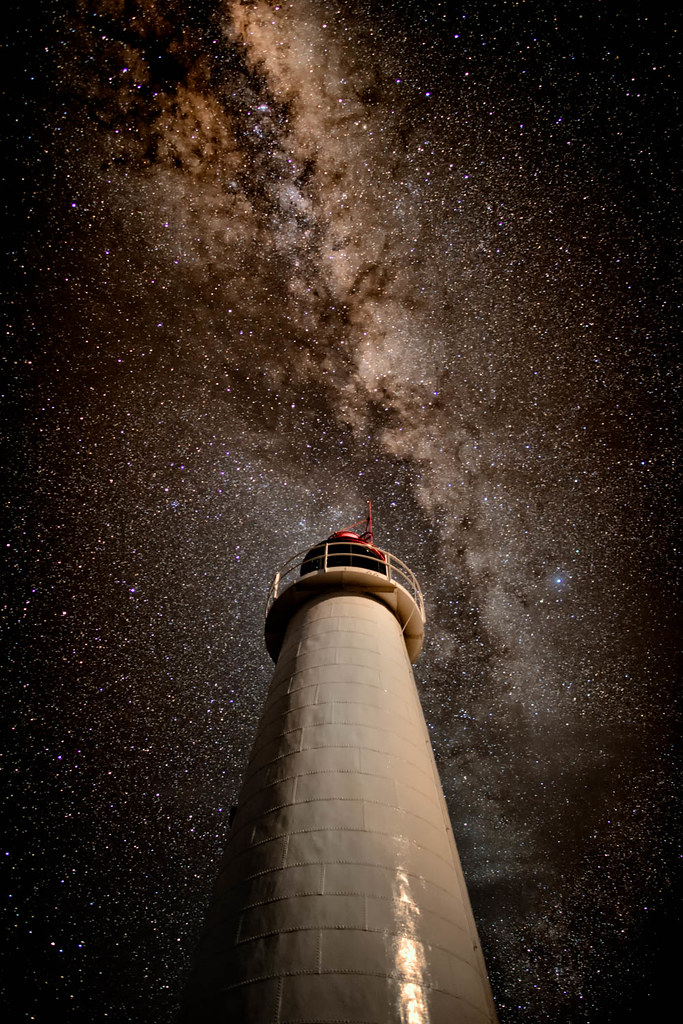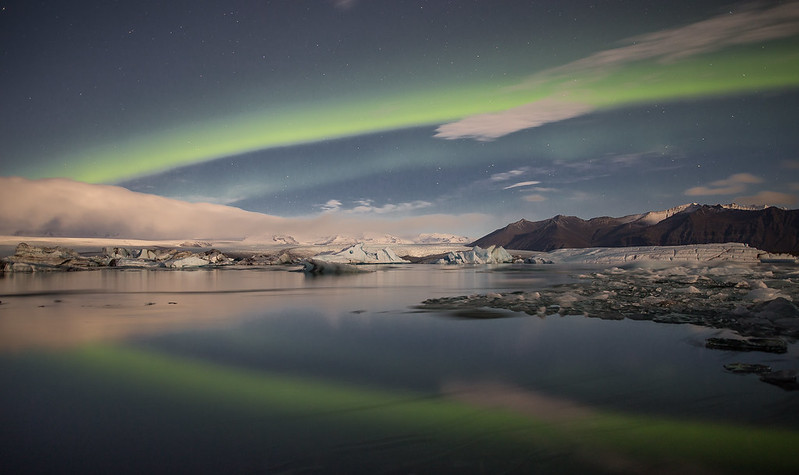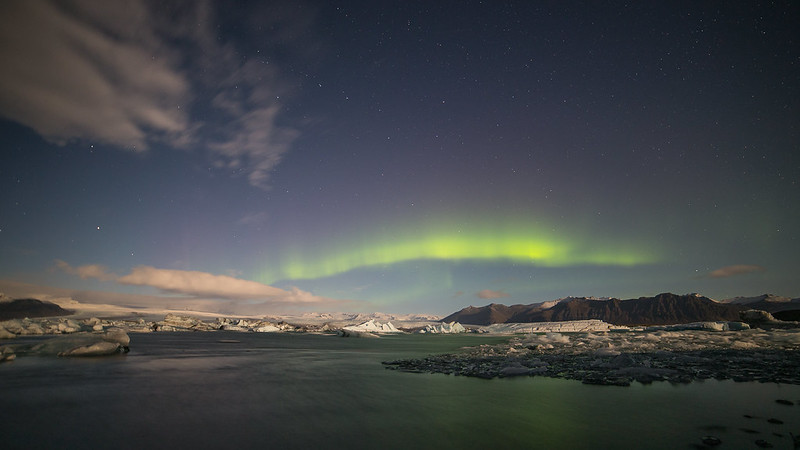I see a lot of interest in the new Samyang 14mm 2.4. But in terms of light-gathering, a 35mm 1.4 is far superior and apparently stitching is fairly simple. So why the interest in the 14mm?
You are using an out of date browser. It may not display this or other websites correctly.
You should upgrade or use an alternative browser.
You should upgrade or use an alternative browser.
Wide-angle Astro - 14mm vs. 35mm
- Thread starter chrysoberyl
- Start date
It's mostly because you're photographing the Milky Way - which tends to be huge. That being said, I've had good results with my Rokinon 24/1.4.
I plan to pick up the new Samyang 14/2.4 when it's available.
 AM2I7337-Edit-2.jpg by Joseph Calev, on Flickr
AM2I7337-Edit-2.jpg by Joseph Calev, on Flickr
I plan to pick up the new Samyang 14/2.4 when it's available.
 AM2I7337-Edit-2.jpg by Joseph Calev, on Flickr
AM2I7337-Edit-2.jpg by Joseph Calev, on Flickr
Upvote
0
I think it is a lot easier to compose a picture when you can take a test picture and see. Then take 3-4 and thinking how they would look then they are stitching. Also it is nicer to be able to take 1 photo and get your shot and have to spend time in editing.
Upvote
0
timmy_650 said:I think it is a lot easier to compose a picture when you can take a test picture and see. Then take 3-4 and thinking how they would look then they are stitching. Also it is nicer to be able to take 1 photo and get your shot and have to spend time in editing.
i'm not sure i understand what you are getting at. if you are staying up late to catch a dark sky, does 10-30 seconds for a test shot really make a difference?
Upvote
0
OK, so go wide if one doesn't want to post-process. I already have the 35mm Art, so it will be less expensive to stitch. But I think I will get the 14mm 2.4 for cave photos and landscapes.
Upvote
0
I don't normally stitch, as I find the 15mm wide enough for most night sky shots. But, on occasion I do with the 15mm, and it gives me a good 180 degree view. This one was a 3 shot pic and stitch. I was fairly generous with the overlap. To get the same with a 35mm is going to mean lots of images.

Upvote
0
Mr Bean said:I don't normally stitch, as I find the 15mm wide enough for most night sky shots. But, on occasion I do with the 15mm, and it gives me a good 180 degree view. This one was a 3 shot pic and stitch. I was fairly generous with the overlap. To get the same with a 35mm is going to mean lots of images.
Aha - thank you! I have taken four shots so far, all with the 35mm. I am interested in more coverage, so perhaps I need to consider a tracker sooner than later. And the Samyang 14mm 2.4, when it is available (and all the other astro caveats).
Lovely shot; I especially like the clouds! Taken with the Zeiss 15mm?
Upvote
0
Thanks chrysoberyl. Yes, using the Zeiss 15mm. While its a rather expensive lens, for night shots, it makes life very easy, as it has a hard infinity stop. I simply have to turn the focus until it stops and I know its in focus. I was impressed that Lightroom stitched the images together very neatly, and the curved effect seems to add to the image (that's a LR artifact). Sometimes, I'd suggest hiring a lens for a week, to see if it does what you want.chrysoberyl said:Aha - thank you! I have taken four shots so far, all with the 35mm. I am interested in more coverage, so perhaps I need to consider a tracker sooner than later. And the Samyang 14mm 2.4, when it is available (and all the other astro caveats).
Lovely shot; I especially like the clouds! Taken with the Zeiss 15mm?
The clouds to the left of the image are the large and small Magellanic clouds, satellite galaxies of the Milky Way (I'm in Australia and this is looking towards the south celestial pole).
Upvote
0
chrysoberyl said:I see a lot of interest in the new Samyang 14mm 2.4. But in terms of light-gathering, a 35mm 1.4 is far superior and apparently stitching is fairly simple. So why the interest in the 14mm?
One thing to consider in the duel between 14 and 35mm, is that the shorter the focal, the longer you can expose without getting star trails if you don't have a star tracker.
On FF, you can get pretty sharp stars up to 20-25 seconds on a 14mm and up to 10-12 with a 35mm.
So, the light gathering capabilities you get with the wider aperture, you lose on the exposure time...
The sweet spot is actually around 24 f/1.4. That's the aperture/focal combo that gets you the most light.
Djaaf.
Upvote
0
Mr Bean said:The clouds to the left of the image are the large and small Magellanic clouds, satellite galaxies of the Milky Way (I'm in Australia and this is looking towards the south celestial pole).
Yes - those clouds! I expect I am too far north to see them. They add much to your photo.
As far as renting the Zeiss 15mm, I would then invoke cloudy weather for a week. And, like when I rented another Zeiss, I ended up buying one.
Upvote
0
Djaaf said:One thing to consider in the duel between 14 and 35mm, is that the shorter the focal, the longer you can expose without getting star trails if you don't have a star tracker.
On FF, you can get pretty sharp stars up to 20-25 seconds on a 14mm and up to 10-12 with a 35mm.
So, the light gathering capabilities you get with the wider aperture, you lose on the exposure time...
The sweet spot is actually around 24 f/1.4. That's the aperture/focal combo that gets you the most light.
Djaaf.
I agree on all points, except the exposure times. I'm not sure pretty sharp will suit me; I am finicky. So a tracker is in the future. Can you recommend one?
I have a Canon 24 1.4, but the coma - ugh! I would sell it, but then I would lose half of what I paid. So I just consider it my 24 2.8, too slow for astro.
Upvote
0
chrysoberyl said:I agree on all points, except the exposure times. I'm not sure pretty sharp will suit me; I am finicky. So a tracker is in the future. Can you recommend one?
I own an Astrotrack and it's a beautiful thing. Very efficient too, but a bit too cumbersome to travel.
It needs a very sturdy tripod, a geared tripod head (I use the Manfrotto 410) to make the alignment bearable and another tripod head for the camera. All in all, my set up is around 10kg without the camera. So all in all, for domestic nightscapes and milky way shots, it's great. It's stable, it's not too much pain to set up, it's alot lighter than my eq6 to move around and it's precise enough to use with lenses up to 100mm if it's not too windy and you didn't completely mess your alignment. But for shots on travel, it's still too cumbersome.
I've seen review for lighter sets, but I didn't personally used them... yet.
Concerning expo time, it pretty much depend on what kind of results you're looking for.
I mostly do urban, northern lights or milky way shots. Urban, you generally don't see the stars, so the point is moot.
For Northern lights, I'll show you 2 recent examples from a trip in Iceland last week :

Aurora over Jokulsarlon by me
This was shot with the Sigma 24-35 f/2 Art, at f/2 and 15 sec (Iso 400). Star trails are beginning to show, but it's still in the "pretty sharp" category for me.

Aurora over Jokulsarlon by me
And this one is from the sammy 14 f/2.8, f/2.8 and 15 sec (but 800 Iso). In this one, the stars are round, with no star trails showing (but a bit of atmospheric distortion...).
I could have gone with f/2.8, 30 sec and Iso 400, with pretty much the same result on the stars than the 24-35 shot.
In this specific case, lens choice was mostly an issue of composition as the aurora was bright enough not to need the maximum amount of light available. But as you can see, to get the same general result in terms of brightness, I was pretty much in the same place with both lenses.
For milky way, well... I've bought the 24-35 too recently to try it on a milky way shot.
But on the sammy, I need to push it out of my comfort zone at around 20secs and 6400 Iso at least (the 6D manages pretty well at 6400 Isos at night, but there's something like 2 stops vignetting on the corners with the sammy, which is painful to correct/clean up for in post at 6400 Iso. Much more manageable at 3200. )
Djaaf.
Upvote
0
chrysoberyl said:Djaaf said:One thing to consider in the duel between 14 and 35mm, is that the shorter the focal, the longer you can expose without getting star trails if you don't have a star tracker.
On FF, you can get pretty sharp stars up to 20-25 seconds on a 14mm and up to 10-12 with a 35mm.
So, the light gathering capabilities you get with the wider aperture, you lose on the exposure time...
The sweet spot is actually around 24 f/1.4. That's the aperture/focal combo that gets you the most light.
Djaaf.
I agree on all points, except the exposure times. I'm not sure pretty sharp will suit me; I am finicky. So a tracker is in the future. Can you recommend one?
I have a Canon 24 1.4, but the coma - ugh! I would sell it, but then I would lose half of what I paid. So I just consider it my 24 2.8, too slow for astro.
Look up "Barn Door" tracker, for instance:
http://www.instructables.com/id/Build-a-Motorized-Barn-Door-Tracker/
Upvote
0
If you are using an automated system then perhaps workflow is not so much an issue, but if you are shooting manually then simplicity is king sometimes. To replicate 14mm angle of view with 35mm you would need to do multi-row stitching which is more tricky. Stitching a single row of 20mm shots (See attached) would be far simpler and less prone to mistakes... frustrating mistakes which can happen when working in the dark.
Another thing to bear in mind is how much of the frame is useful with the 35mm. The worse the corner performance the more overlap is required to exclude any problematic areas which won't stitch nicely. (My 35L II is pretty darn good at f/1.4. 100% crops of extreme corners. In terms of astigmatism, the top-right is the worst performance, the bottom-right is slightly better. The top-left and bottom-left corners are both extremely good) I have no problems stitching with 20% overlap. If you need to stop down significantly to improve corners then there goes your light gathering advantage.
Another thing to bear in mind is how much of the frame is useful with the 35mm. The worse the corner performance the more overlap is required to exclude any problematic areas which won't stitch nicely. (My 35L II is pretty darn good at f/1.4. 100% crops of extreme corners. In terms of astigmatism, the top-right is the worst performance, the bottom-right is slightly better. The top-left and bottom-left corners are both extremely good) I have no problems stitching with 20% overlap. If you need to stop down significantly to improve corners then there goes your light gathering advantage.
Attachments
Upvote
0
Similar threads
- Replies
- 217
- Views
- 48K
- Replies
- 28
- Views
- 11K



